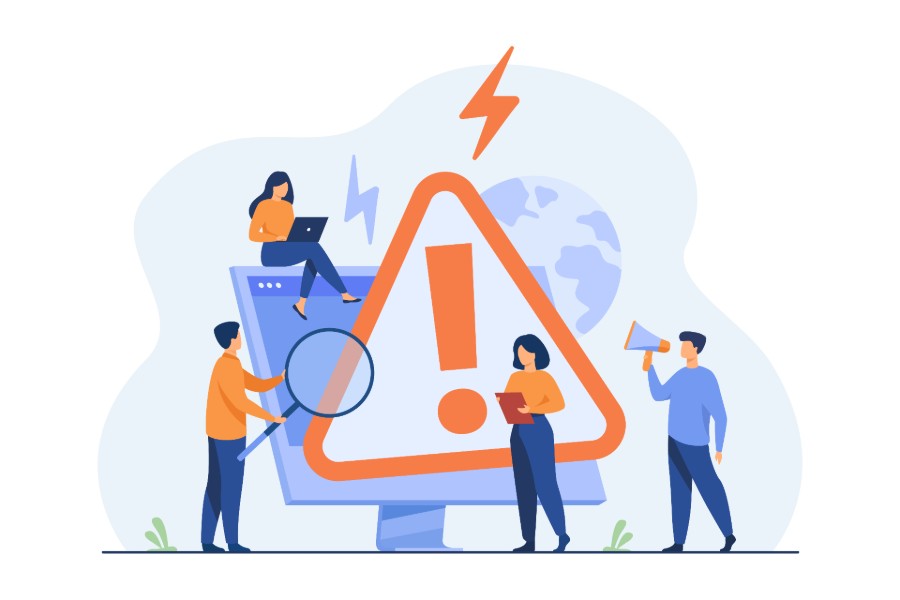Smoke vs Regression Testing
Whether you are a skilled professional QA team leader or an inexperienced tester at the beginning of their career, differentiating a large number of testing types is crucial. Understanding the differences between test types, as well as the contribution of each test to the Application Lifecycle Management, is essential to ensure full testing coverage, and eventually, a high-quality product. You must be familiar with two important and high-value tests: Smoke testing and Regression testing. These tests play a key role in ensuring proper functionality at different stages of the software development process.
In this article, you will learn the fundamentals of smoke and regression testing, the differences between them and their contribution to the QA process.

What is Smoke Testing?
Smoke testing, also known as “build verification testing”, is a test performed at a very early stage of the software development, designed to check the stability of deployed software build. It is intended to find major defects in the core of the software and eliminate them as soon as possible. Thereby, the smoke testing reduces the cost of removing bugs in later stages of the software development and helps release faster. Smoke testing ideally fits Agile and DevOps methodologies since it prevents testers from wasting their time performing in-depth testing on a build with critical core bugs.
This specific test includes only small and simple test cases in order to ensure the core features are functioning properly. Since the scope of the test is surface-level testing, it is an easy and quick test to run. After the smoke testing is done and successfully passed, the testing team has the green light to proceed with the testing process and move forward to execute comprehensive test types. However, in cases when the smoke testing fails and the build is broken, it is returned to the developers for repair.
Advantages of Smoke Testing
- Help to determine the stability of a software build
- Allow finding defects at early stages
- Save valuable time and resources for the company
- Easy and quick test to perform
What is Regression Testing?
Software regression is when a feature that worked faultlessly ceases to work after a particular change is deployed within the software like source code changes, system updates, and so forth. Since improvements must be implemented in the software from time to time, and some changes can damage the software functionality, it is important to perform regression testing. The purpose of regression testing is to identify, from a deeper scope, if a new change causes new bugs or harms the software.
Performing regression testing consistently after adding new features or making changes will greatly assist you to keep your software updated and ensure flawless functionality. Various testing types can be used to perform regression testing such as retest-all testing, complete testing, progressive testing, etc. The regression testing can be executed manually or automated depending on your needs and the number of test cases.
Advantages of Regression Testing
- Ensure changes did not damage the system’s functionality
- Find new bugs before releasing new features
- Help to upgrade and update the software
- Can be performed manually or automated

Smoke Testing and Regression Testing: Comparison
| Smoke Testing | Regression Testing | |
|---|---|---|
| Definition | A test that is designed to check the stability of deployed software build | A test that is designed to check the functionality of the software after a change has been made |
| Purpose | Find major bugs in the core of the software and remove them before testing them more comprehensively | Ensure new changes that implement in the software did not harm it and caused new bugs |
| Scope | Surface-level | Deep-level |
| Executed mostly by | QA team and developers | QA team |
| When to perform | In early stages, to every new software build | After implementing changes or updates in the software |
| Manual or Automation | Can be manual or automated | Can be manual or automated |
| Advantages |
|
|

Conclusion
To sum up, with an intent to create high-quality software, that is up-to-date with new features and free of defects, there is a need to execute various testing types such as smoke testing and regression testing. Smoke testing is a very short and simple test to run, that is executed on every new software build while using a small number of basic test cases in order to find major defects. Regression testing, on the other hand, is a deeper scope of testing that is intended to understand if a new change applied in the software causes new bugs or harms the functionality.
PractiTest test management platform could significantly help you manage, control, track, and optimize all your QA testing efforts, including your smoke and regression testing. With PractiTest, you could gain end-to-end visibility using customized dashboards based on your needs, and deliver faster than before. Sign up today for a 14-day free trial to enjoy all the benefits PractiTest can offer.











